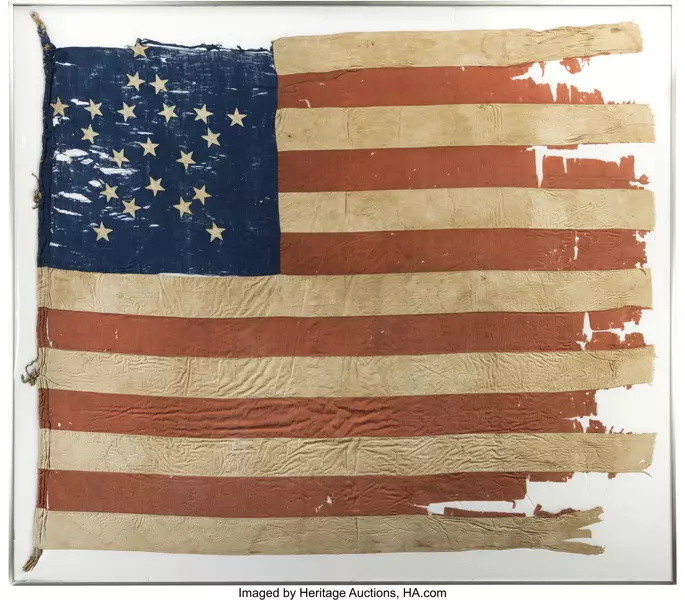The Abraham Lincoln Presidential Library and Museum has once again come under scrutiny after a manager purchased a disputed 21-star flag for over $15,000 without consulting the collections committee. This acquisition led to an investigation by Illinois’ Office of the Executive Inspector General into the use of funds for the purchase. It also caused division among the museum’s leadership and may have resulted in the firing of an employee who claimed that the acquisition circumvented established procedures.
The flag, measuring 7-foot-5 by 6-foot-5 (2.26 meters by 1.96 meters), is called a “Grand Luminary” due to its 21 stars arranged in the shape of a star. The museum maintains that this represents Illinois’ admission as the 21st state; however, respected vexillologist Jeff Bridgman argues that the flag was likely produced decades later during the Civil War and may represent an exclusionary Southern banner with stars symbolizing states loyal to the Union.
This is not the first time the museum’s credibility has been called into question. Its previous acquisition of a purported Lincoln stovepipe hat, appraised at $6.5 million, faced controversy when evidence linking it to the 16th president was questioned. Additionally, in 2019, a director was fired for sending without approval a copy of the Gettysburg Address, written in Lincoln’s hand, to a Texas exhibit operated by conservative political commentator Glenn Beck.
The museum’s acquisitions chief, Ian Hunt, requested permission from the executive director to pursue the 21-star flag on November 6th. The flag had been part of the prestigious Zaricor Flag Collection, which Hunt won in an auction for $15,625 on November 13th using the King Hostick trust fund, an endowment intended to finance state historic research and artifact acquisition.
Museum policy dictates that purchases over a certain amount require the approval of the collections committee; however, it only requires their “recommendation” on pricey items. Despite this, Wills admitted there was a “misstep” by Hunt for not waiting for the committee’s input before acquiring the flag.
The flag’s age and authenticity have been contested by various experts in the field. Notably, respected vexillologist Howard Madaus previously examined the flag and determined it to be made entirely of cotton in 1818-20. However, Jeff Bridgman argues that high-resolution images show the blue canton is wool or a wool blend, which would suggest a later production date during the Civil War era.
Although the flag’s age remains uncertain, Wills maintains that it has a “solid pedigree” and was a sound investment for the museum. Regardless of its history, he said, “We’re always open to learning more about it…And if it turns out that it’s from a different era with a different story, that’s the way it goes. We’ll tell that story. And it just so happens that that story is a good one, too.






